Introduction
Cookies are one of the most beloved treats worldwide, offering endless variety and versatility to suit every taste and occasion. At the heart of the cookie world are six basic types that serve as the foundation for nearly all cookie recipes: drop, rolled, molded, pressed, bar, and wafer cookies. Each type has its own unique characteristics, preparation methods, and culinary charm.
Among these, wafer cookies stand out for their light, crispy texture and elegant simplicity. Often used as a base for layered desserts or enjoyed on their own, wafer cookies bring a distinct element to the cookie family. But how exactly do wafer cookies fit into the broader classification of cookie types?
In this blog post, we’ll explore the six fundamental types of cookies, highlighting their defining features and popular variations. We’ll take a closer look at wafer cookies to understand their place within these categories and uncover why they remain a timeless favorite for bakers and dessert enthusiasts alike.
Let’s dive into the world of cookies and discover what makes each type—and especially wafer cookies—so special!
Drop Cookies: The Everyday Favorite
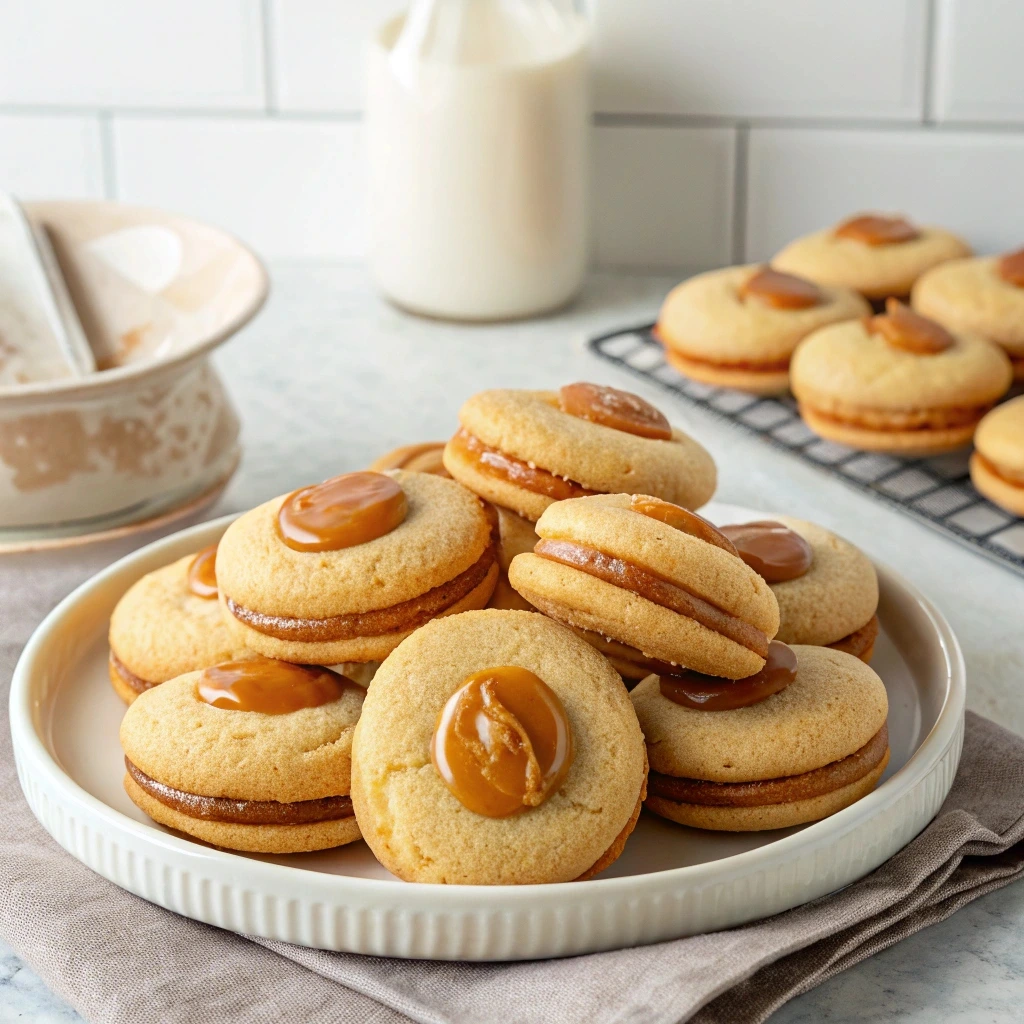
Definition and Examples
Drop cookies are one of the simplest and most common cookie types. The name comes from the method of preparation, where dough is dropped by spoonfuls or scoops directly onto a baking sheet. This process creates cookies with a rustic, homemade appearance.
Examples include:
- Chocolate chip cookies: A timeless classic, loved for its balance of sweetness, chocolate richness, and chewy texture. Find easy chocolate chip cookie recipes here.
- Oatmeal cookies: Known for their hearty texture and ability to include raisins, nuts, or chocolate chips. Explore our oatmeal cookie ideas here.
- Peanut butter cookies: These often feature a signature crisscross pattern pressed into the dough with a fork. Try peanut butter cookie variations here.
Characteristics of Drop Cookies
Drop cookies are incredibly versatile, offering a range of textures and flavors depending on the recipe and ingredients. Their defining characteristics include:
Texture:
- Typically soft or chewy in the center with slightly crisp edges.
- Variations in texture can be achieved by adjusting ingredients like butter, sugar, and baking time.
Ease of Preparation:
- No rolling or shaping required, making them ideal for quick baking sessions.
- Perfect for beginner bakers or families baking with children.
Adaptability:
- Recipes can easily incorporate mix-ins like nuts, dried fruits, or candies. Try adding dried fruit to your cookie dough for extra flavor.
- Flavors can be customized with spices (e.g., cinnamon) or extracts (e.g., vanilla, almond).
Basic Techniques for Making Drop Cookies
To achieve perfect drop cookies, follow these fundamental techniques:
Mixing the Dough:
- Creaming butter and sugar: This creates a light, airy texture by incorporating air into the dough.
- Combine dry and wet ingredients carefully to avoid overmixing, which can make cookies tough.
Scooping the Dough:
- Use a cookie scoop or tablespoon for uniform sizes, ensuring even baking.
- Space dough balls about 2 inches apart on the baking sheet to allow for spreading.
Baking Tips:
- Bake at the correct temperature, typically 350°F (175°C), to balance browning and baking through.
- Remove cookies from the oven when the edges are set but the centers are slightly soft, as they will continue to firm up while cooling.
Storage and Freshness:
- Store baked cookies in an airtight container to maintain softness. Learn how to store your cookies properly here.
- Refrigerate or freeze unused dough for later baking.
Rolled Cookies: Artistry in Baking
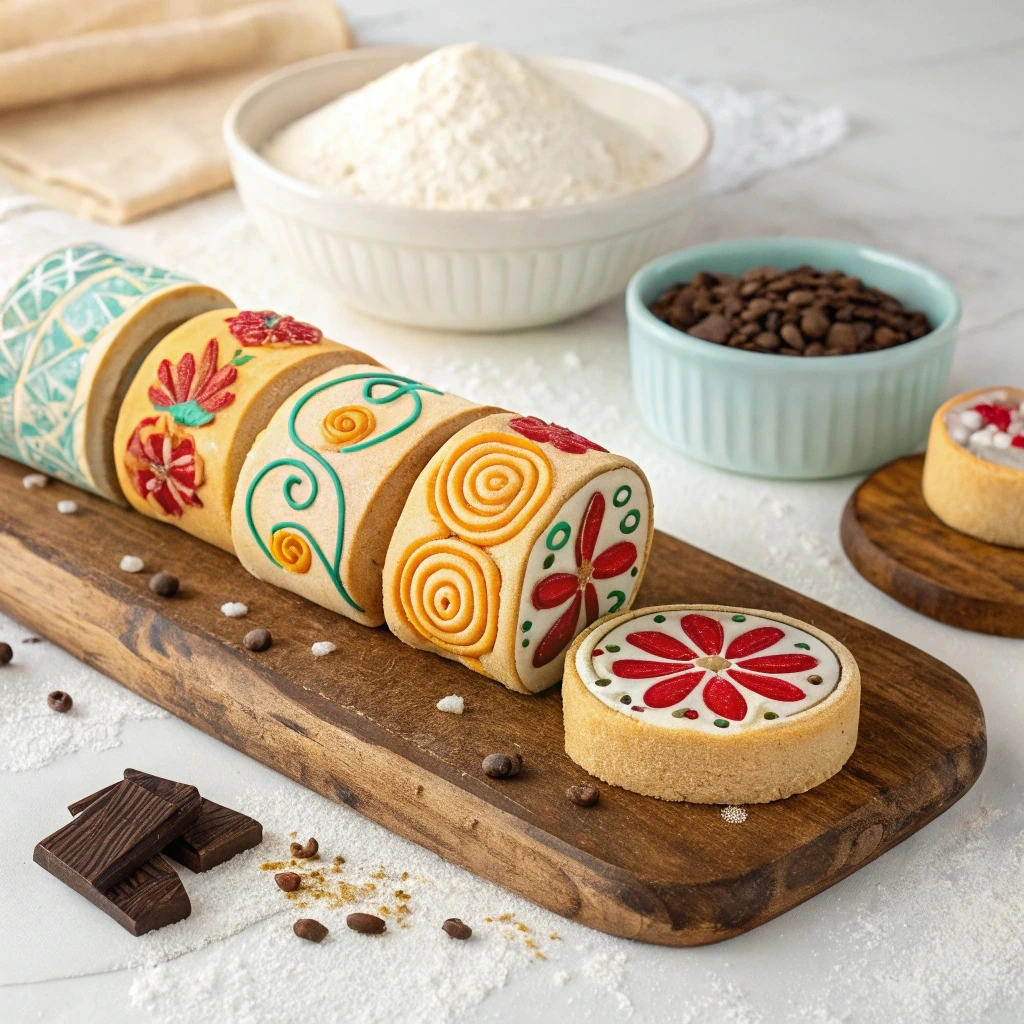
Rolled cookies represent the creative side of baking, allowing bakers to craft perfectly shaped and beautifully decorated treats. From classic sugar cookies to festive gingerbread creations, these cookies are as much about precision and artistry as they are about flavor.
What Defines Rolled Cookies?
Rolled cookies are a category of cookies that start with a firm dough, which is rolled out into a thin sheet before being cut into specific shapes using cookie cutters or knives. They are known for their versatility, making them a favorite for celebrations and holidays.
Examples of Rolled Cookies:
- Sugar Cookies: The quintessential rolled cookie, often decorated with royal icing, sprinkles, or edible glitter.
- Gingerbread Cookies: Popular during the holidays, these spiced cookies are used for making gingerbread people or even elaborate gingerbread houses.
- Linzer Cookies: A European classic, these almond-flavored cookies are rolled out, cut into rounds, and sandwiched with jam.
- Shortbread Cookies: While simple, these buttery cookies can be shaped and decorated for an elegant touch.
Key Characteristics:
- Firm Dough: Rolled cookie dough is firm enough to be shaped but soft enough to retain a delicate texture after baking.
- Shape Versatility: The dough can be shaped into intricate designs, making these cookies ideal for custom or themed decorations.
- Even Thickness: Maintaining an even thickness ensures uniform baking and prevents overcooking thinner areas.
Why Precision Matters When Rolling Dough
The rolling process is critical for achieving perfect rolled cookies. Precision in rolling ensures that each cookie bakes evenly and holds its shape during and after baking.
- Uniform Thickness:
- Rolling the dough to a consistent thickness (typically 1/8 to 1/4 inch) ensures all cookies bake at the same rate.
- Uneven dough leads to some cookies being undercooked while others may burn.
- Clean Shapes:
- Precision prevents distortion of intricate designs, especially when using detailed cookie cutters.
- Over-handling the dough or rolling it too thin can cause shapes to stretch or lose definition.
- Minimizing Waste:
- Rolling the dough efficiently reduces scraps and ensures even the last cookies are as good as the first.
- Re-rolling scraps multiple times can toughen the dough, so careful initial rolling is key.
- Preserving Texture:
- Overworking the dough can lead to tough cookies, so handling the dough minimally while rolling helps maintain a tender, melt-in-your-mouth texture.
Tips for Decorating and Cutting Rolled Cookies
Rolled cookies offer a blank canvas for creativity. From basic shapes to intricate decorations, these tips will help you achieve bakery-quality results.
- Cutting Tips:
- Chill the Dough: Cold dough is easier to roll and cut cleanly without sticking. If the dough becomes soft, refrigerate it for 15–20 minutes.
- Use Sharp Cutters: Sharp-edged cookie cutters create precise shapes with clean edges. Avoid dull cutters that can tear the dough.
- Dip Cutters in Flour: Lightly dusting cookie cutters with flour prevents sticking and helps achieve sharp outlines.
- Cut Strategically: Place cutters close together to minimize scraps and maximize the number of cookies per roll.
- Decorating Techniques:
- Royal Icing: Use royal icing for detailed designs or as a base for sprinkles and edible glitter. Allow cookies to cool completely before icing.
- Sugar Sprinkles: Sprinkle colored sugar over the cookies before baking for a simple yet vibrant look.
- Stamped Patterns: Use cookie stamps or embossed rolling pins to add texture and design directly to the dough.
- Painted Designs: Edible food paints or gels can be used to create hand-painted patterns or accents.
- Pro Tips:
- Plan Ahead: Have all your decorating tools and materials ready before you start.
- Work in Batches: Decorate cookies in small batches to prevent icing from drying out before sprinkles or decorations are applied.
- Drying Time: Allow iced cookies to dry completely (several hours or overnight) before stacking or packaging to prevent smudging.
Rolled cookies truly embody the artistry of baking, offering endless opportunities to showcase creativity and skill. Whether you’re preparing holiday gingerbread or elegant sugar cookies, mastering the techniques of rolling, cutting, and decorating will elevate your baking to the next level.
Molded Cookies: Hands-On Creativity
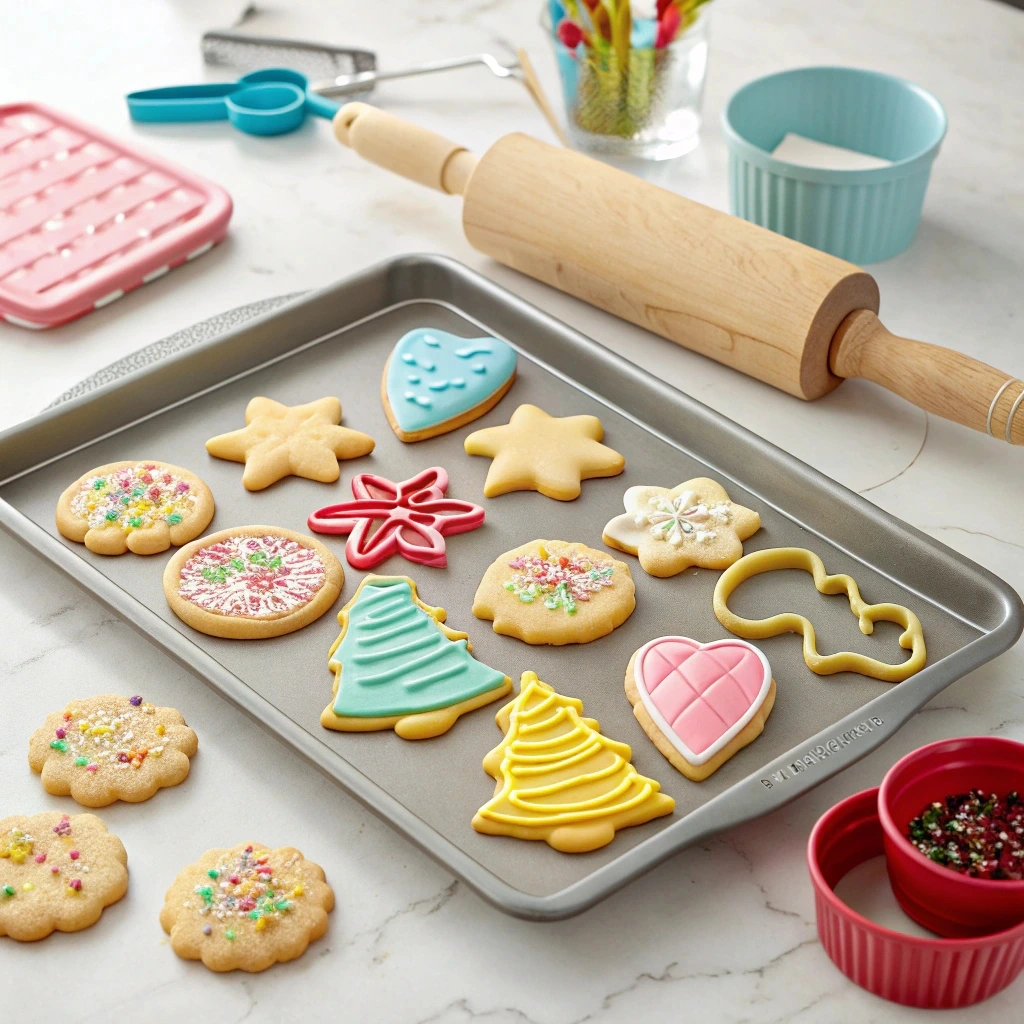
Characteristics of Molded Cookies
Molded cookies are defined by their distinct shapes and textures, which are created by hand-shaping or pressing the dough into molds. These cookies stand out for their rustic charm, satisfying texture, and ability to take on intricate designs.
Examples of molded cookies include:
- Peanut butter cookies: Recognizable by their crisscross pattern made with a fork. These cookies are soft, chewy, and rich in flavor.
- Snickerdoodles: Dough balls rolled in cinnamon sugar before baking, giving them a characteristic cracked appearance and warm, spiced flavor.
- Sandbakkels (Sand Tarts): Traditional Scandinavian cookies made by pressing dough into decorative tins, creating thin, crisp shells.
Key characteristics of molded cookies:
- Texture and Consistency: Molded cookies are often denser than other types due to their shaping method, providing a rich and satisfying bite.
- Versatility in Design: These cookies can be plain or decorated, simple or intricate, making them suitable for everyday treats or festive occasions.
- Personal Touch: The hands-on process allows bakers to add unique flourishes, like thumbprints for fillings or imprints for patterns.
Tools Used for Shaping Molded Cookies
Molded cookies rely on a variety of tools and techniques to achieve their distinctive forms. While some cookies are shaped entirely by hand, others use specialized molds or presses for added detail.
Essential tools include:
- Cookie Molds:
- Made of materials like wood, silicone, or metal, these molds create detailed designs, often inspired by traditional patterns or themes.
- Popular for holiday cookies or cultural specialties like Springerle or speculoos.
- Cookie Presses:
- These devices extrude dough into intricate shapes, such as flowers or stars, ideal for pressed cookies like spritz.
- Presses come with interchangeable disks to create a variety of designs.
- Hands and Simple Tools:
- Thumbprints or pinches can create cavities for fillings (e.g., jam-filled thumbprint cookies).
- Forks, knives, or rolling pins can add texture or patterns.
- Decorating Tools:
- Embossing tools, stencils, or edible paints can be used to enhance the cookies post-baking.
- Rolling balls of dough in coatings like sugar, nuts, or spices adds both flavor and visual appeal.
Creative Variations of Molded Cookies
Molded cookies are a playground for creativity, offering bakers the chance to experiment with ingredients, shapes, and decorations. Some ideas include:
- Flavor Infusions:
- Add spices like cinnamon, cardamom, or ginger for warmth and depth.
- Experiment with mix-ins like finely chopped nuts, citrus zest, or flavored extracts (e.g., almond or vanilla).
- Filled Molded Cookies:
- Create thumbprint cookies filled with jam, chocolate, or caramel.
- Mold dough around fillings like Nutella, fruit preserves, or cream cheese for a delightful surprise.
- Decorative Techniques:
- Use textured molds to imprint seasonal or themed patterns, such as snowflakes for winter or flowers for spring.
- Roll cookies in coatings like shredded coconut, sanding sugar, or finely crushed candies for an added layer of texture.
- Cultural Variations:
- Ma’amoul: Middle Eastern cookies filled with dates or nuts, shaped using decorative wooden molds.
- Speculoos: Spiced European cookies with intricate designs pressed into the dough.
- Springerle: Anise-flavored German cookies with embossed designs from carved molds.
Molded cookies celebrate the hands-on joy of baking, allowing bakers to connect with tradition while expressing their creativity. Whether you’re shaping dough by hand, pressing it into molds, or experimenting with flavors and textures, molded cookies are a versatile and rewarding addition to any baking repertoire.
Pressed Cookies: Beautifully Shaped Treats
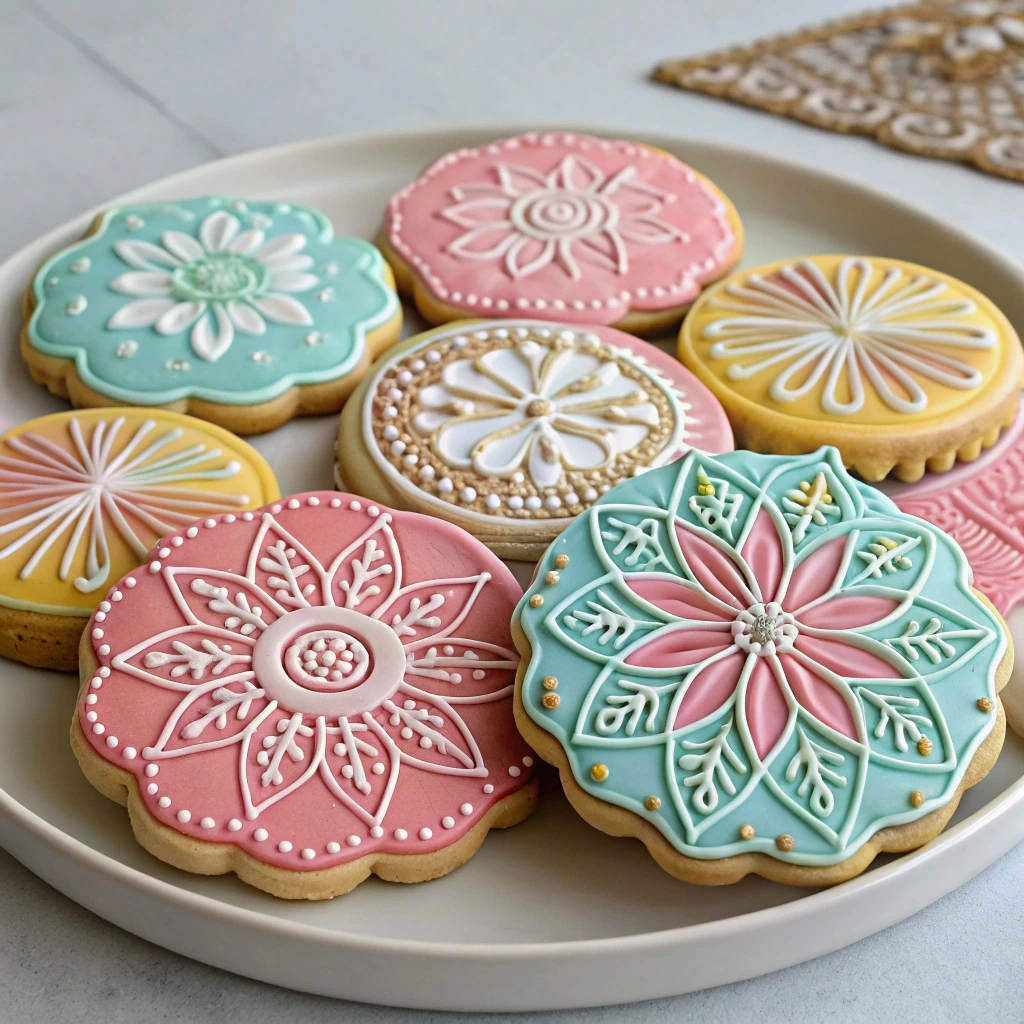
What Sets Pressed Cookies Apart?
Pressed cookies are instantly recognizable for their delicate, intricate shapes and buttery, melt-in-your-mouth texture. The dough for pressed cookies is soft enough to be extruded through a cookie press, which allows for the creation of unique and decorative designs.
Examples of pressed cookies include:
- Spritz cookies: A classic Scandinavian treat, known for its buttery flavor and festive shapes like stars, trees, and flowers.
- Cheese straws: While savory, these follow the same pressing method, offering a crisp and cheesy variation of pressed dough.
Key characteristics of pressed cookies:
- Soft, Pliable Dough: The dough must be the right consistency—not too stiff, so it passes smoothly through the press, but firm enough to hold its shape after pressing.
- Distinctive Shapes: Pressed cookies feature intricate designs that make them a favorite for holidays and special occasions.
- Ease of Preparation: While they require a cookie press, pressed cookies are quick and simple to make once the dough is prepared, making them ideal for large batches.
How Cookie Presses Work and Tips for Success
The cookie press is the defining tool for making pressed cookies, and mastering its use can elevate your baking game. Here’s how it works and how to get the best results:
- How It Works:
- A cookie press is a handheld device that extrudes dough through a patterned disk, creating cookies with uniform, intricate shapes.
- Presses typically have multiple interchangeable disks for different designs, such as hearts, flowers, or holiday motifs.
- Tips for Success:
- Prepare the Dough Properly: Ensure the dough is smooth and pliable but not sticky. If it’s too soft, refrigerate it briefly; if too stiff, let it warm slightly at room temperature.
- Choose the Right Surface: Press cookies directly onto ungreased, cool baking sheets. Greasing can prevent the dough from adhering, causing the shapes to lose definition.
- Load the Press Correctly: Fill the press with dough, packing it tightly to remove air pockets.
- Consistency is Key: Apply even pressure when pressing out cookies to ensure uniformity. Practice a few presses to get the feel for the right amount of force.
- Clean and Maintain the Press: Clean the disks and press thoroughly after use to ensure smooth operation for future batches.
Popular Flavors and Variations for Pressed Cookies
Pressed cookies are wonderfully versatile, with endless possibilities for flavor combinations and creative twists.
- Classic Flavors:
- Vanilla: A traditional favorite that complements the buttery base.
- Almond: Adds a subtle nutty flavor, often paired with a hint of vanilla.
- Chocolate: Cocoa powder or melted chocolate can be incorporated into the dough for a rich, chocolatey version.
- Festive Variations:
- Spiced Cookies: Add warm spices like cinnamon, nutmeg, or ginger for holiday-themed cookies.
- Citrus Zest: Lemon, orange, or lime zest brightens the flavor and pairs well with the buttery dough.
- Decorative Additions:
- Colorful Dough: Use gel food coloring to create vibrant cookies for holidays or themed events.
- Toppings: Sprinkle cookies with sanding sugar, nonpareils, or finely chopped nuts before baking for added texture and appeal.
- Drizzles and Dips: Once baked, cookies can be drizzled with chocolate, dipped in glaze, or decorated with royal icing for extra flair.
- Specialty Pressed Cookies:
- Savory Options: For an unexpected twist, make savory pressed cookies like herb-flavored cheese crackers.
- Gluten-Free or Vegan Variations: Use alternative flours, such as almond or coconut flour, and substitute butter with plant-based options for dietary preferences.
Pressed cookies offer a delightful combination of elegance and simplicity, making them a go-to choice for bakers who want to impress without spending hours in the kitchen. With the right techniques and flavor combinations, these beautifully shaped treats can steal the show at any gathering or celebration.
Wafer Cookies: Light and Crispy Elegance
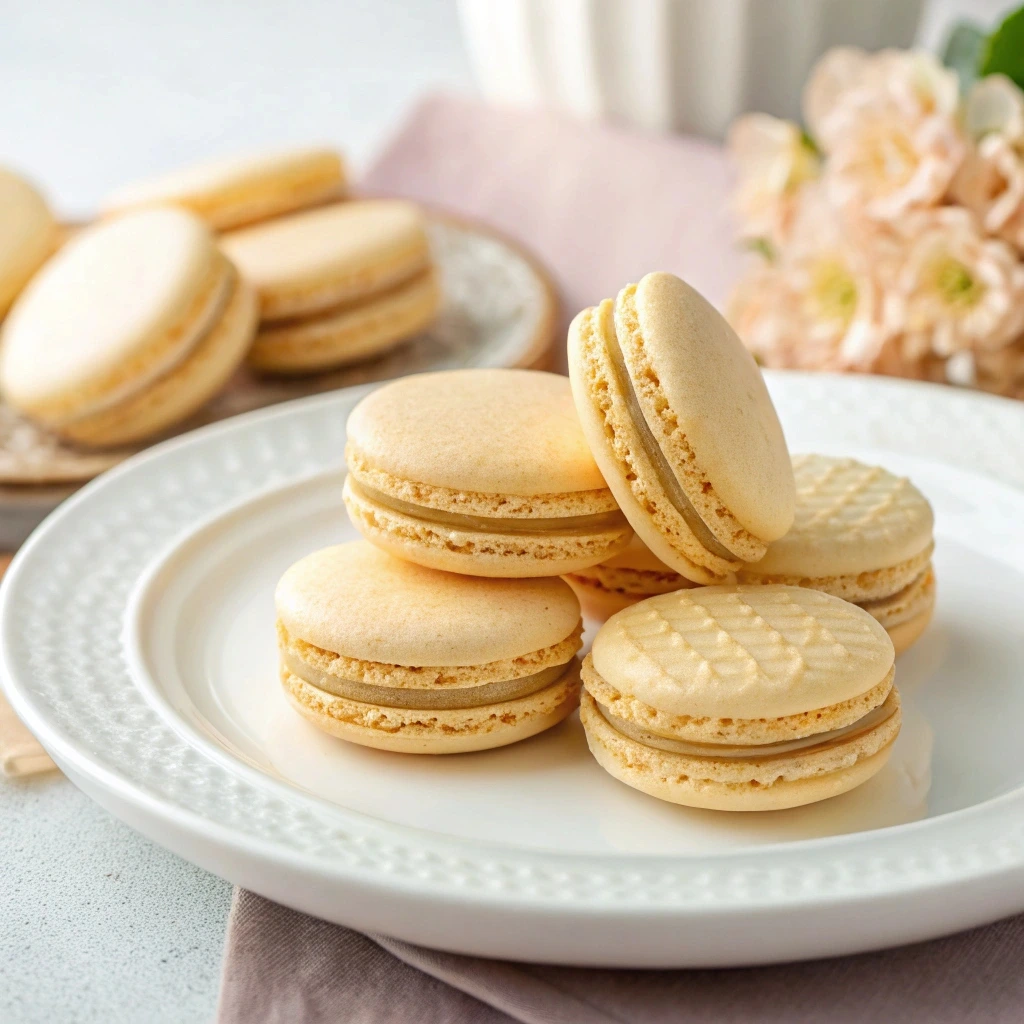
The History and Origin of Wafer Cookies
Wafer cookies have a long and storied history, tracing their origins to ancient civilizations that developed thin, flat breads and pastries. These cookies evolved from simple baked goods to the delicate and intricate treats we know today.
Early Origins:
Wafer-like confections date back to ancient Egypt, where thin, unleavened breads were cooked on heated stones or metal plates.
In medieval Europe, wafers were made using iron molds engraved with religious or decorative designs. They were often enjoyed during feasts or as part of religious rituals.
Modern Evolution:
By the 17th century, wafers became more refined, incorporating sweeteners and flavorings like honey or spices.
The industrial revolution allowed for mass production, making wafer cookies widely accessible.
Today, wafer cookies are enjoyed worldwide, often layered with cream fillings or coated in chocolate for added indulgence.
Key Ingredients and Techniques for Making Wafers
Wafer cookies are defined by their light, crispy texture and delicate flavor. Achieving the perfect wafer requires attention to ingredients and technique.
Key Ingredients:
- Flour: Provides structure. All-purpose flour is commonly used, though some recipes incorporate cornstarch for extra crispness.
- Sugar: Adds sweetness while contributing to the crispy texture.
- Egg Whites: Serve as a binding agent, giving wafers their lightness and delicate crunch.
- Butter or Oil: Adds richness and helps create a smooth batter for even spreading.
- Flavorings: Vanilla, almond extract, or citrus zest can enhance the flavor profile.
Techniques for Success:
- Thin Batter: The batter should be pourable and spreadable, ensuring the wafers bake into thin, even layers.
- Baking Tools: Use a wafer iron or silicone mat to achieve the characteristic thinness. Traditional wafer presses or pizzelle makers can also create intricate patterns.
- High Heat, Short Time: Wafers are baked quickly at a high temperature, typically around 375°F (190°C), to achieve crisp edges without overbaking.
- Cooling: Allow wafers to cool completely on a wire rack. This ensures they maintain their crisp texture.
How Wafer Cookies Fit into the Six Basic Types
Wafer cookies occupy a unique position among the six basic types of cookies, standing out for their distinctive texture and method of preparation.
Category: Wafer cookies belong to the molded or shaped cookie category, as they are pressed or poured into specific molds or patterns before baking.
Texture: Unlike other molded cookies, wafers are exceptionally thin and crisp, making them lighter and more delicate.
Distinctive Features:
- Wafers are often paired with fillings (e.g., chocolate or hazelnut cream) or layered to create treats like Kit-Kat-style bars.
- Their minimal ingredients and simple preparation distinguish them from more elaborate cookie types.
- Wafers’ versatility allows them to bridge the gap between cookies and desserts, often serving as a base or accompaniment in other culinary creations.
Pairing and Serving Ideas for Wafer Cookies
Wafer cookies are not only delightful on their own but also shine when paired with other treats or incorporated into desserts.
Pairing Ideas:
- Beverages: Serve wafers with coffee, tea, or hot chocolate. Their crisp texture complements the warmth of these drinks.
- Ice Cream: Use wafers as a garnish or sandwich two wafers around a scoop of ice cream for an elegant dessert.
- Dessert Wine: Lightly sweet wafers pair well with dessert wines like Moscato or Riesling.
Creative Serving Suggestions:
- Layered Desserts: Incorporate wafers into trifles, parfaits, or layered cakes for added crunch.
- Chocolate-Dipped Wafers: Dip one end of each wafer in melted chocolate and sprinkle with crushed nuts or coconut for a decorative touch.
- DIY Wafer Cones: Shape warm wafers into cones or cylinders and fill with whipped cream, custard, or mousse for an impressive presentation.
Holiday and Special Occasions:
- Use patterned wafer presses to create festive designs for holidays or themed events.
- Decorate wafers with icing or edible glitter for a touch of elegance.
Wafer cookies, with their light and crispy elegance, offer endless possibilities for creativity and indulgence. Whether enjoyed plain, paired with other treats, or transformed into stunning desserts, they are a timeless favorite in the world of baking.
Conclusion
Understanding the six basic cookie types—drop, rolled, molded, pressed, bar, and wafer cookies—offers a deeper appreciation for the versatility and creativity of baking. Wafer cookies, with their light, crispy texture and unique role in the cookie family, stand out as an elegant treat that perfectly complements their counterparts.
Whether you’re indulging in a chewy drop cookie, crafting intricate rolled designs, or savoring the delicate crunch of wafers, each type brings its own charm and flavor to the table. By exploring these cookie types, you can expand your baking skills and delight in the endless possibilities of homemade treats.
Now, it’s time to grab your apron and try your hand at creating these cookie classics—starting with the timeless elegance of wafer cookies. Your next favorite recipe might be just a batch away!
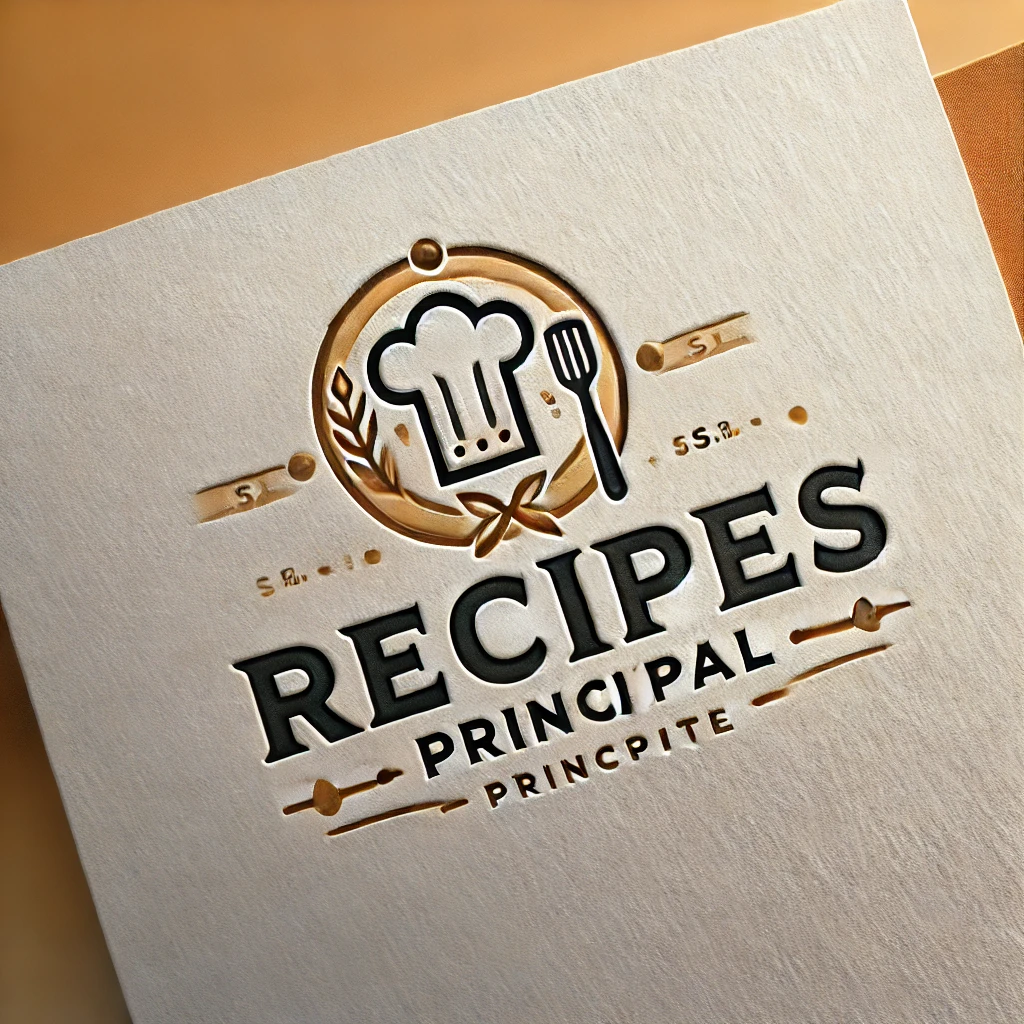
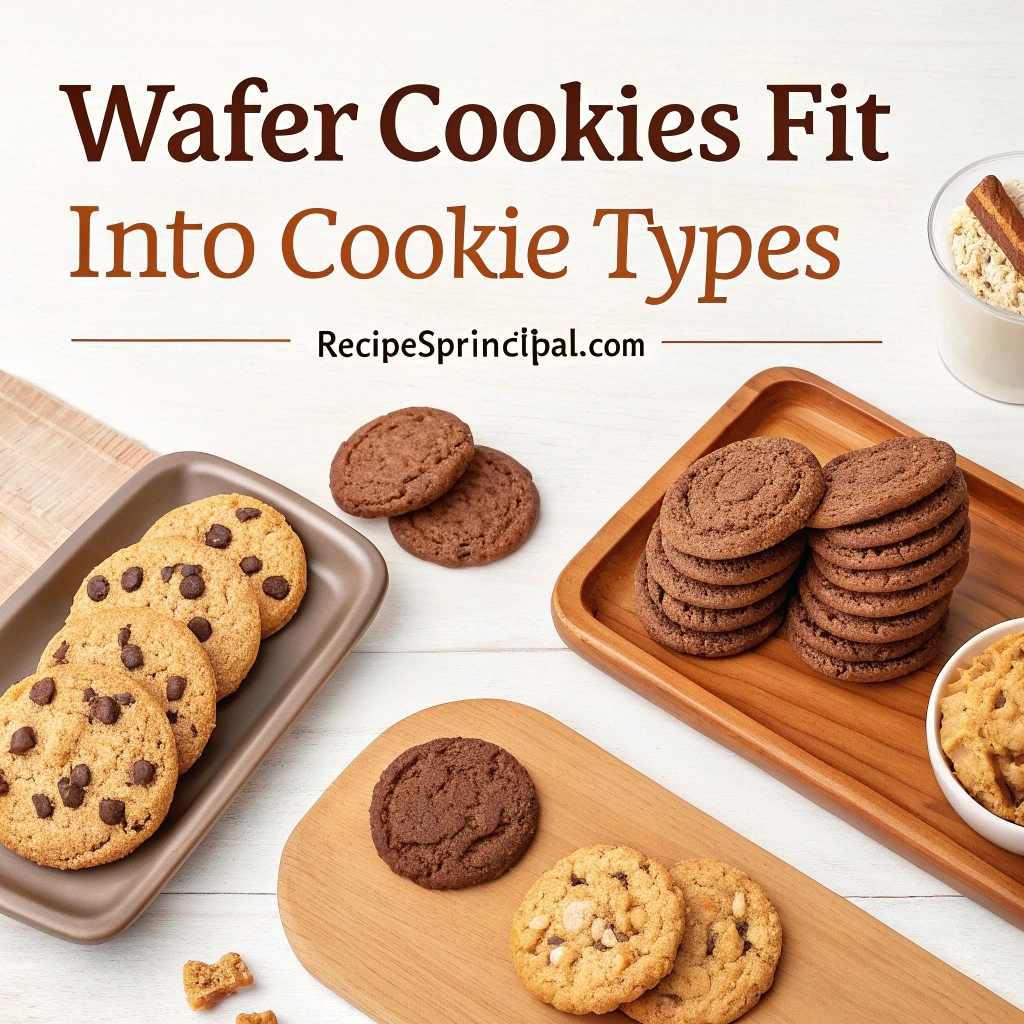
1 thought on “The 6 Basic Cookies: How Wafer Cookies Fit into Cookie Types”